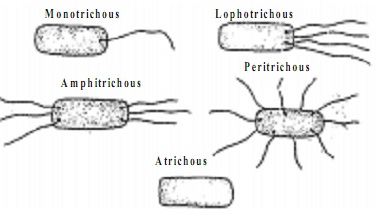Mitochondria are commonly known as power house of the cell ( because it take part in release of energy in the form of ATP by oxidative phosphorylation ). They were first observed by Kolliker in 1850. Benda (1897) gave the present name of mitochondria.
Mitochondria are absent in prokaryotes or anaerobic eukaryotes. Their number varies from one in some algae ( Chlorela ), 25 in sperm cell, 300-400 in kidney cell, 1000 in liver cell, 50,000 in giant amoeba and 500,000 in flight muscle cell. The number depends upon cellular activity. They are different in shape - sherical, cylindrical, tubular or filamentous.
Ultrastructure:- The mitochondria contains two membranes and two chambers, outer and in inner. The two membranes form the envelop of the mitochondria.
Outer Membrane:- The membrane is smooth. It is permeable to number of metabolites. It is due to presence of protein channels called porins. A few enzymes connected with lipid synthesis are located in the membrane.
Inner Membrane:- It is permeable to some of metabolites. It is rich in double phospholipids. Protein content is also high. The inner membrane is infolded variously to form involutions called cristae. They are meant for increasing the physiological active area of inner membrane. A cristae encloses a space that is continuation of the outer chamber. The inner membrane as well as cristae posses small tennis-racket like particles called elementary particles, F0 - F1 particles or oxysomes. Each elementary particle or oxysome has a head, a stalk and a base. Elemetary particles or oxysomes contain ATPase enzyme and are connected with ATP formation. They are, therfore, the centres of ATP synthesis.
Outer Chamber:- The chamber is the space that lies between the outer and inner membrane of the mitochondrial envelop. It extends to into the spaces of cristae. The chamber contain a fluid havin a few enzymes.
Inner Chamber:- It forms the core of the mitochondria. The inner membrane contains a semi-fluid matrix. The matrix has proteins, ribosomes, RNA, DNA, enzymes of Kreb's cycle, amino acid synthesis and fatty acid metabolism. Mitochondrial ribosomes are 55s to 70s in nature. They thus resemble to the ribosomes of prokaryotes. Because of presence of its own DNA this organelle is semi-autonomous.

Active and inactive state:- Mitochondria occur in two states, active and inactive. In active state, mitochondria are actively engaged in performing Kreb's cycle, electron transport chain and oxidative phosphorylation. In this state core is reduced, cristae randomly distributed and outer chamber space quite large. Active state is also called condensed state. In inactive state, Atp synthesis is reduced. Matrix or core is enlarged while outer chamber is narrow. It is also called orthodox state.
Functions of Mitochondria:-
i) Mitochondria are miniature factories where respiratory substrate is completely oxidised to carbon dioxide and water.The energy is liberated in the form of ATP. ATP comes put of mitochondria and helps perform verious energy requiring processes of the cell.Because of formation of ATP the mitochondria is called power houses of the cell.
ii) Mitochondria provide important intermediates for the synthesis of biochemicals like chlorophyll, cytochromes, steroids etc.
iii) The inner chamber of the mitochondria has enzymes for the synthesis of fatty acids.
iv) Synthesis of many amino acids occur in the mitochondria.
v) Mitochondria may store and releases calcium when required.







